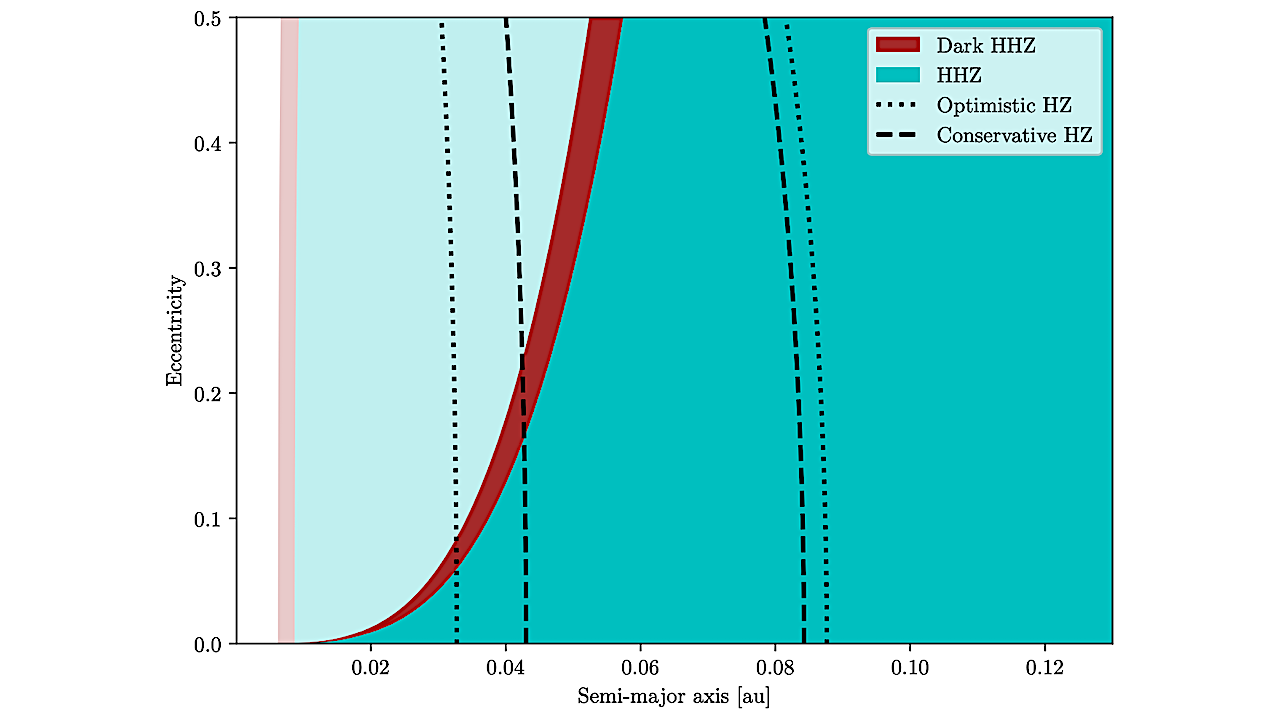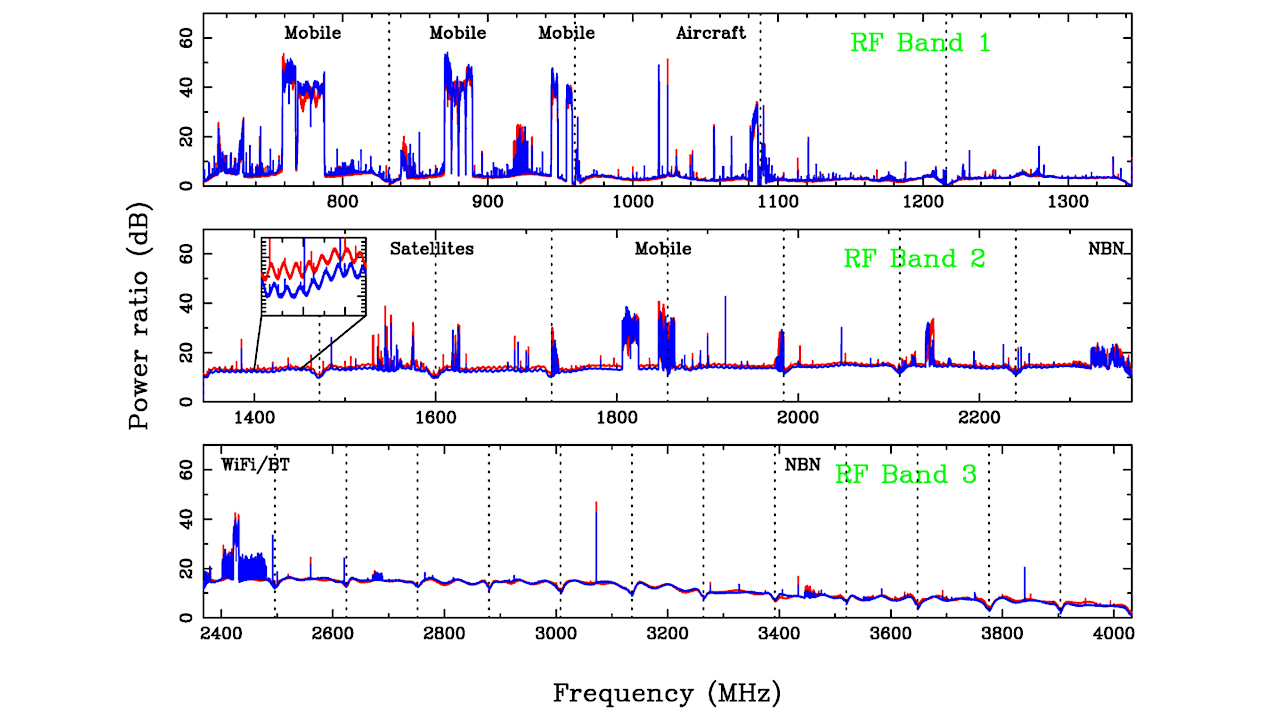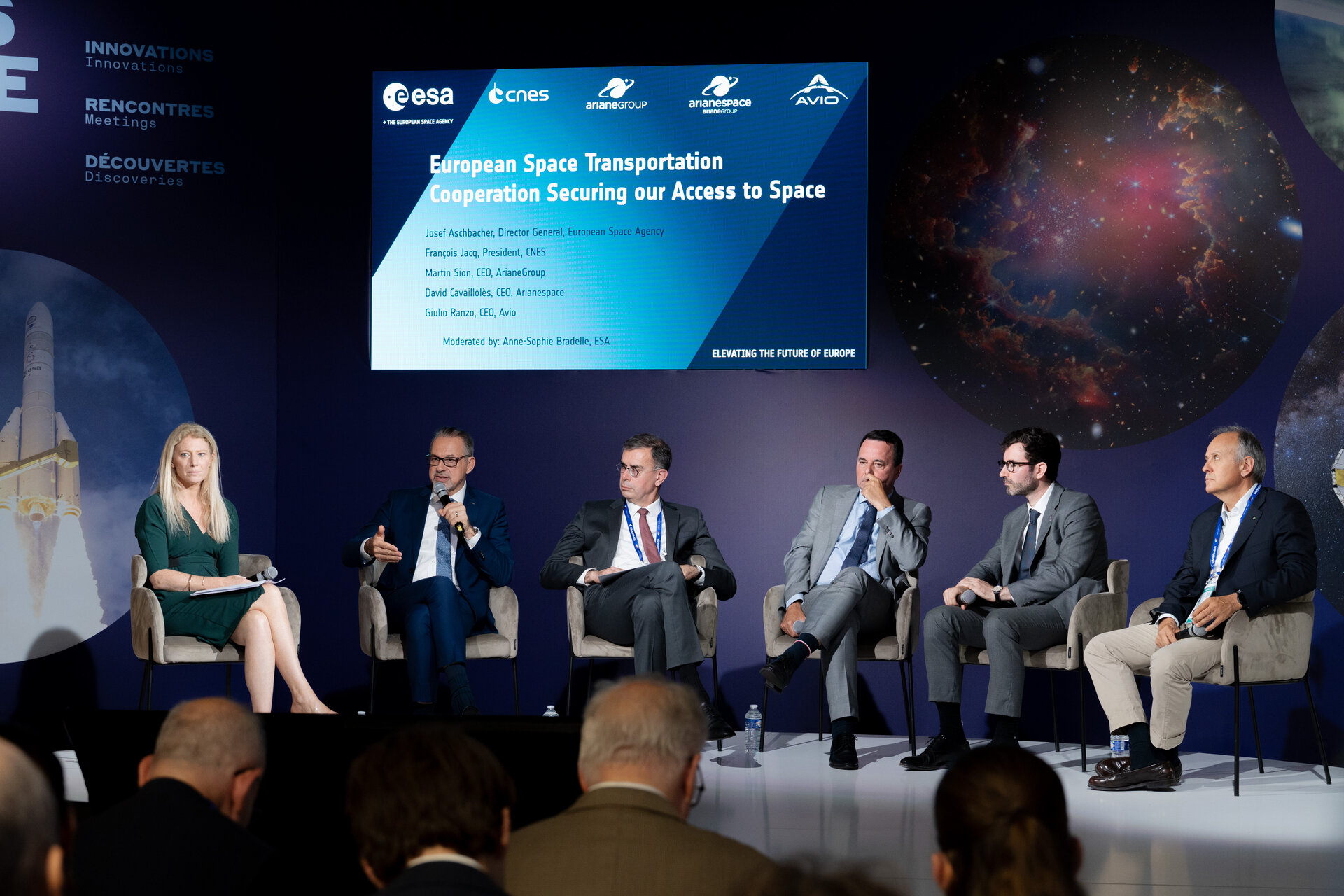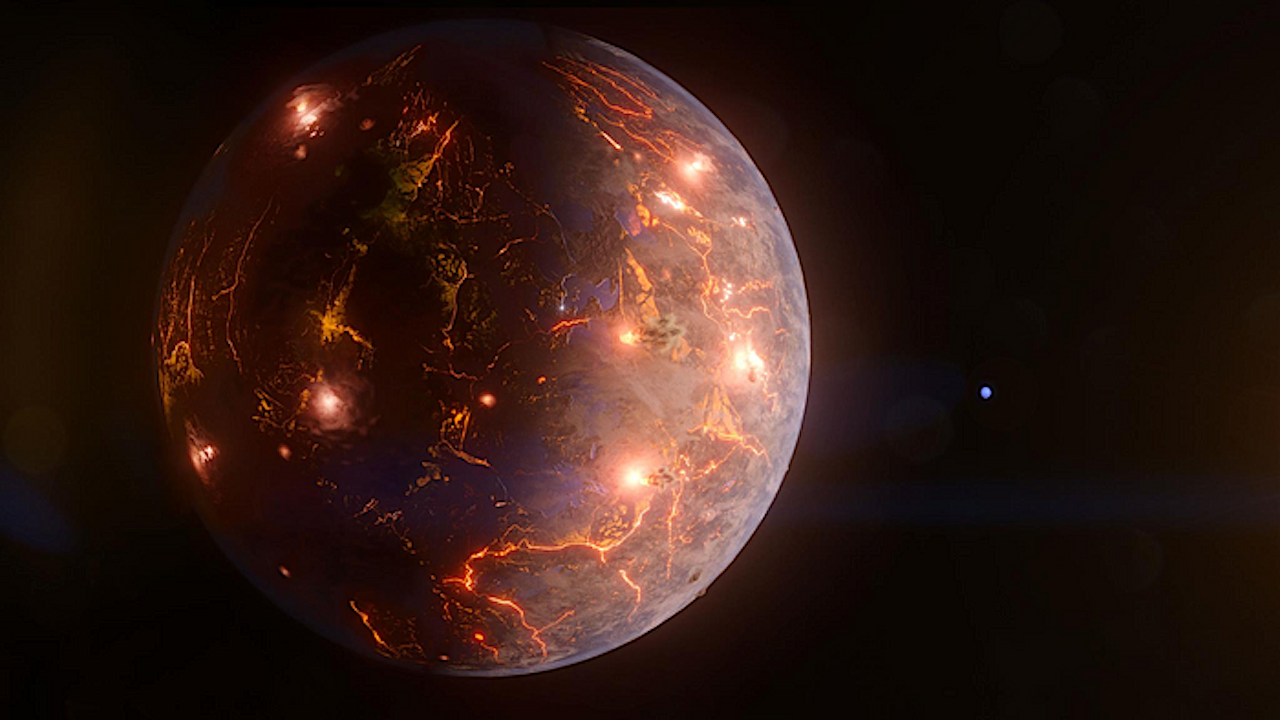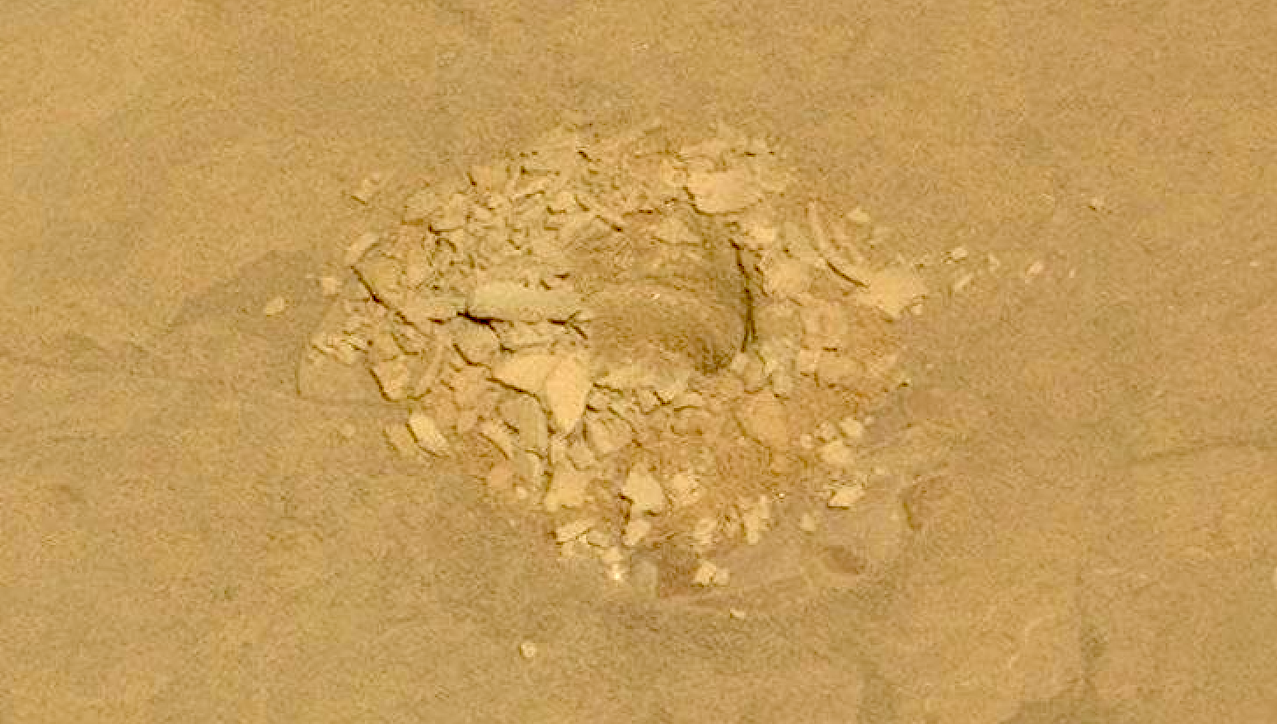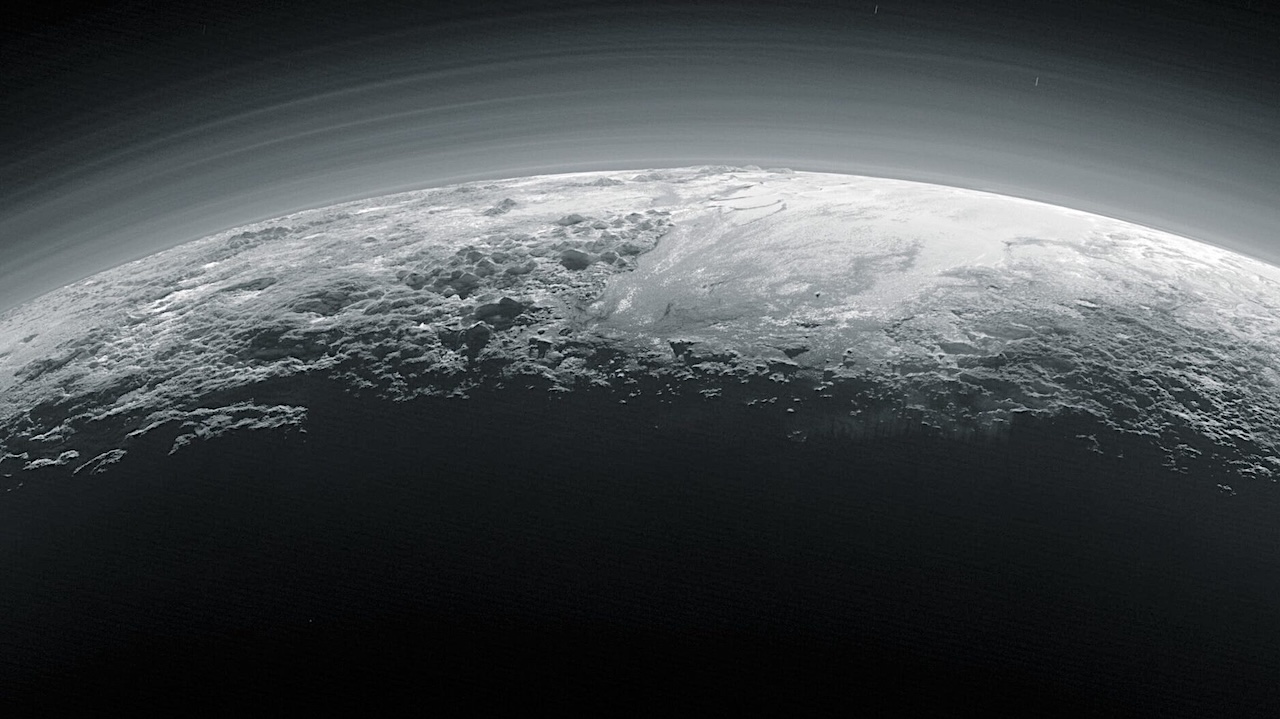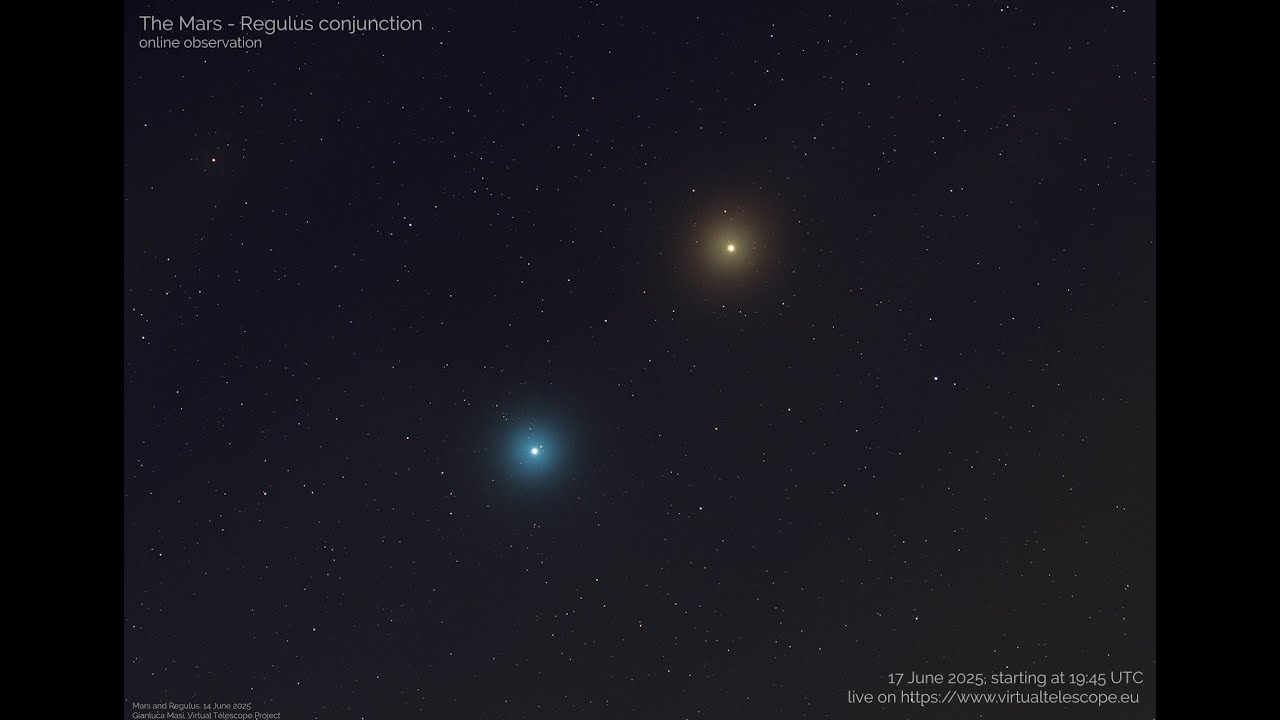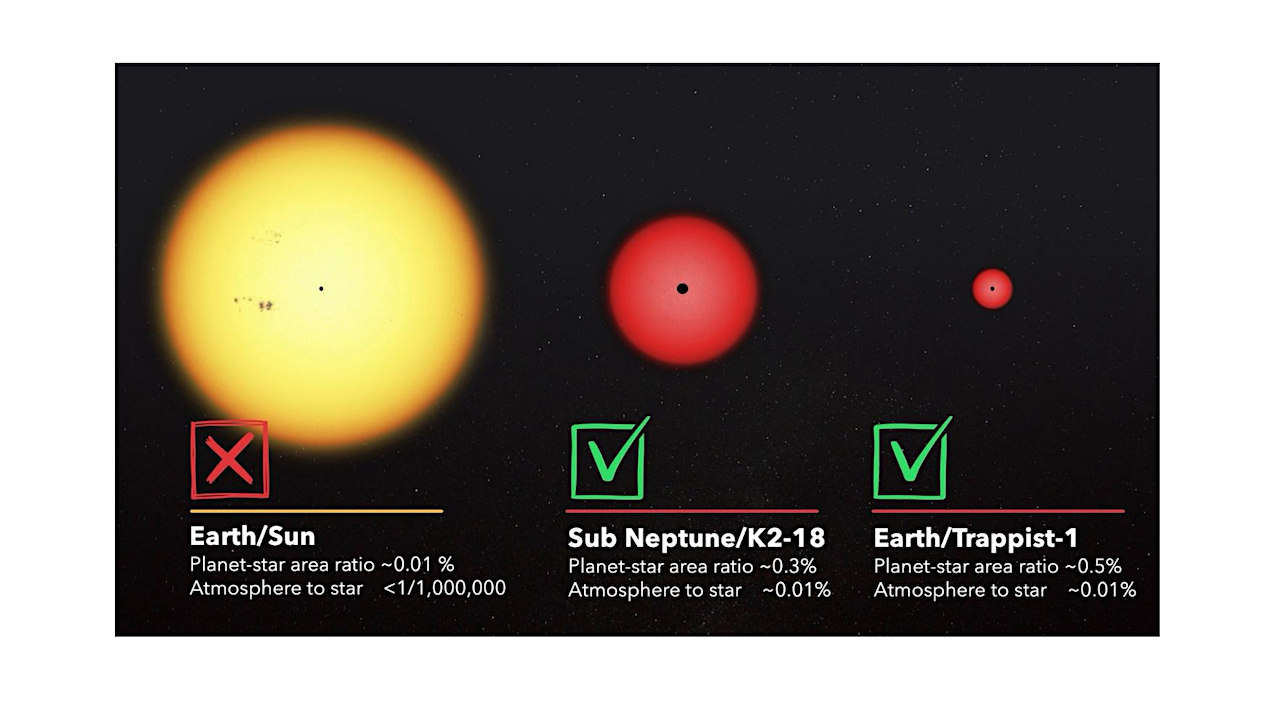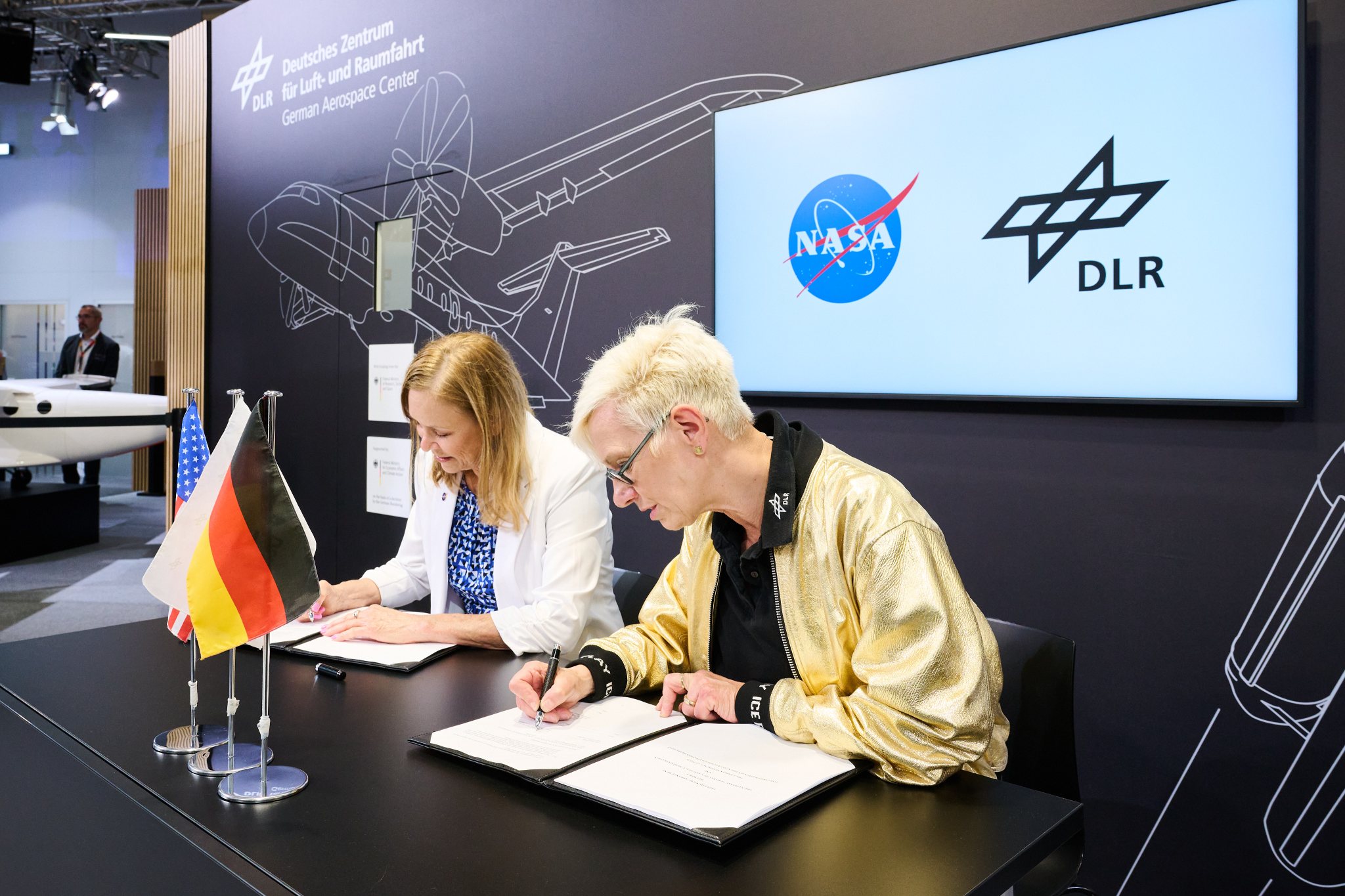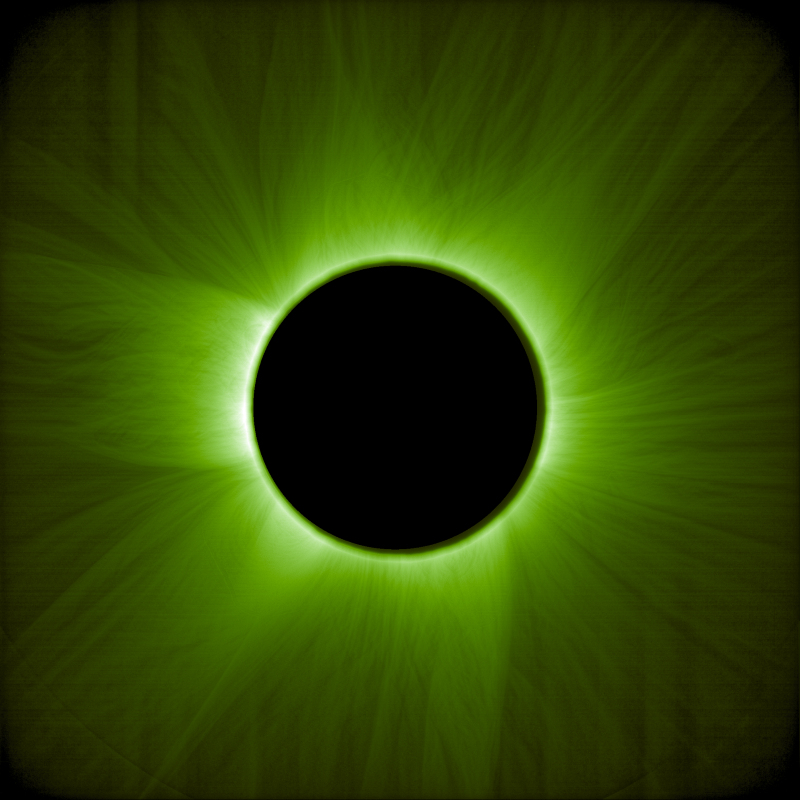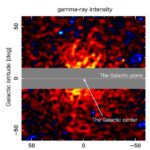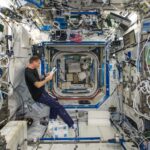The HHZ (blue shaded regions) and dark HHZ (red shaded regions) around a 0.12M⊙ star for a 7M⊕, 1.7R⊕ hycean planet with tidal quality factor Q = 2. The low-opacity
Archive for June, 202554- Page
Spectra showing local sources of RFI that consistently affect the Parkes UWL bandpass. The UWL receiver records two polarisations which are represented by the colours red and blue, respectively, in
The second day of the International Paris Air Show has proven to be groundbreaking for the European Space Agency as it officially marked the beginning of the industrial development of
LP 791-18 d, illustrated here, is an Earth-size world about 86 light-years away. The gravitational tug from a more massive planet in the system, shown as a blue dot in
NASA’s Mars rover Curiosity acquired this image of the “Altadena” drill hole using its Mast Camera (Mastcam) on June 8, 2025 — Sol 4564, or Martian day 4,564 of the
NASA’s New Horizons spacecraft captured this image of Pluto’s surface shrouded in atmospheric haze. (Credit: NASA/JHUAPL/SwRI) The first observations of Pluto by NASA’s James Webb Space Telescope (JWST) reveal dramatic
The Mars-Regulus conjunction: online observation – 17 June 2025 – YouTube Watch On Mars and the star Regulus are set to put on a dazzling show tonight as the Red
Red dwarf stars are more favorable for transiting planet atmosphere characterization. The main way we observe exoplanet atmospheres today is via transiting planets. The planet transit signal is the planet-to-star
Acting NASA Administrator Janet Petro and Anke Kaysser-Pyzalla, chair, Executive Board, DLR (German Aerospace Center, or Deutsches Zentrum für Luft- und Raumfahrt), signed an agreement June 16, 2025, to continue a
This is the Proba-3 spacecraft’s newly unveiled first view of the sun’s corona, or outer atmosphere. This is a filtered visible light view, revealing the corona as a human eye
-
 012024 in Review: Highlights from NASA in Silicon Valley
012024 in Review: Highlights from NASA in Silicon Valley -
 02Panasonic Leica Summilux DG 15mm f/1.7 ASPH review
02Panasonic Leica Summilux DG 15mm f/1.7 ASPH review -
 03How New NASA, India Earth Satellite NISAR Will See Earth
03How New NASA, India Earth Satellite NISAR Will See Earth -
 04And Thus Begins A New Year For Life On Earth
04And Thus Begins A New Year For Life On Earth -
 05Astronomy Activation Ambassadors: A New Era
05Astronomy Activation Ambassadors: A New Era -
06SpaceX launch surge helps set new global launch record in 2024
-
 07Space Force plans new ‘Futures Command’ amid pressure to speed up modernization
07Space Force plans new ‘Futures Command’ amid pressure to speed up modernization


